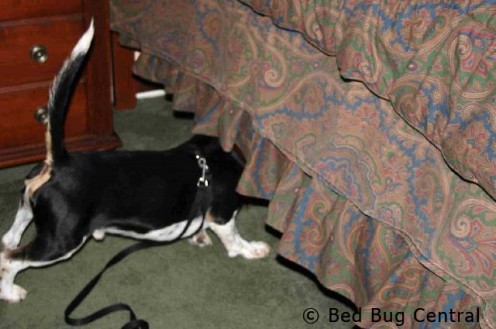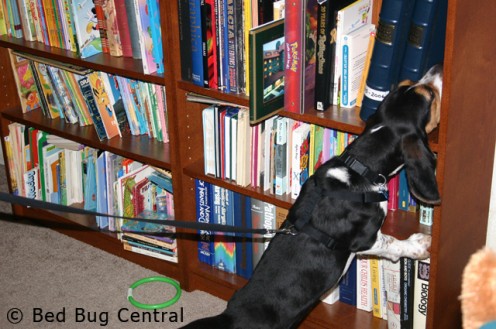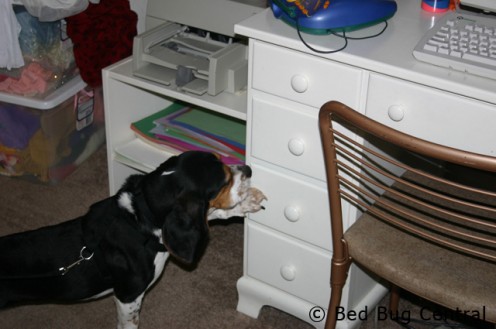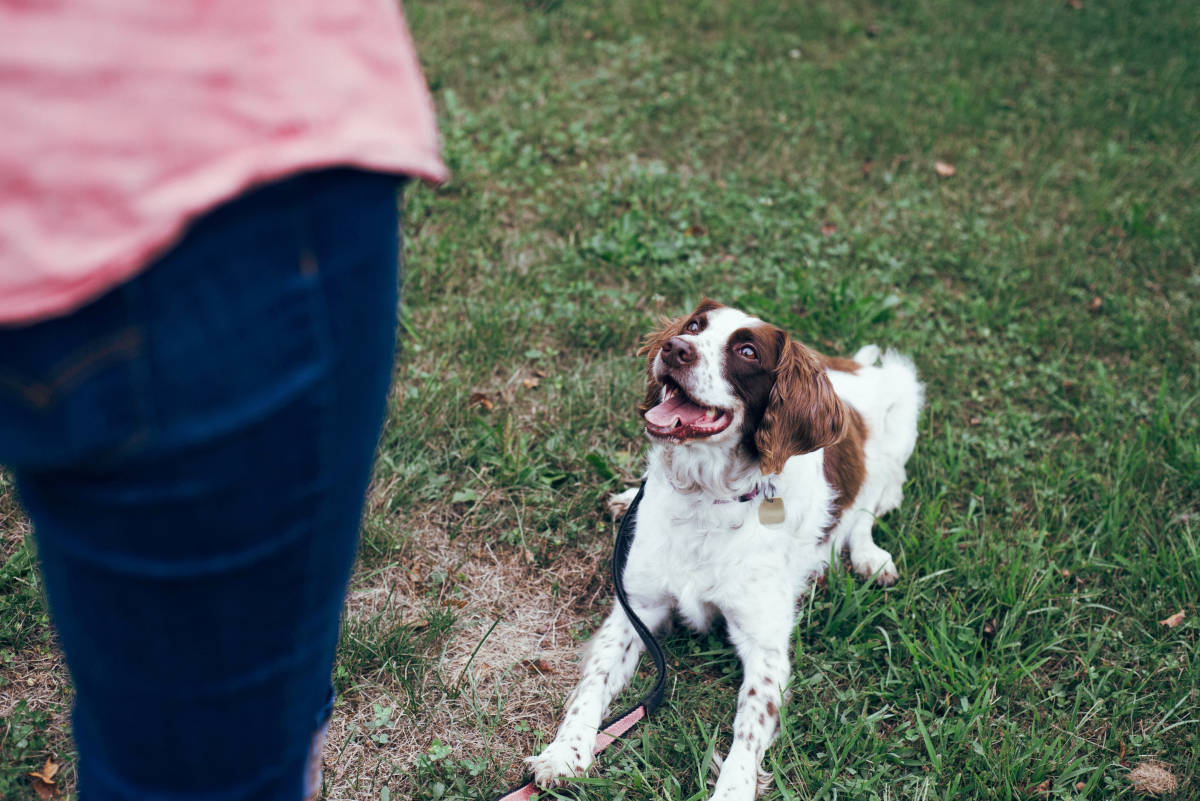How to Train a Dog to Seek and Find
seek and find training makes his work a game



Natural Abilities
Most pet owners train their dogs in the wrong manner. They wait until the dog has done the wrong thing, and then tell them "NO", sometimes even hitting them or striking them as well. This is ineffective, and actually counter productive for several reasons.
If you tell a dog, let's say as an example, to stay, leaving the dog sitting. They may or may not at this time tell them that they are good, or even give them treats as a reward for doing the right thing. Usually this distracts the dog, or even if it doesn't, he will get up and move away quickly enough, for their attention span is not long, especially for something new.
When the dog does move from the spot from which they were told to stay, this is when the pet owner then will try to correct the dog with a negative, as if he were a child, and understands. The dog does not understand this and will become confused. He quickly loses the stay command and will try to figure out what you are scolding him for,
Going back now, let's go over a correct method of completing the training that will be easy for you and understandable for the dog. Putting the dog in the correct place again, the same place he was when he moved, and stay right by the dog, and as long as he does not move, continue to tell him he is a good dog. A hand command usually helps him to understand what you want too. Keep repeating to him to stay, and telling him he is good. Do not make him do this for a very long time, but especially in the beginning, about 10 or 15 seconds is enough for him to get what you want him to do. Then with another word, like OK, or break, release him from the stay. Then at this time showering him with good dog positive reinforcements, and maybe even a small treat, this is when you would want to do this.
In order to teach a dog to seek and find an item, or a person, is to begin with a dog that is naturally inclined to do this sort of thing. Various breeds of dogs were bred to do various things. For example, a border collie was bred to herd animals. Hounds were bred to track animals you are hunting, and retrievers were bred to bring back birds and game that you have hunted. I have used border collie/lab mixes for seek and find. I have also used successfully used mixed breeds of dobermans, pit bulls, terriers, and even little doxies. With a mixed breed dog, you can get the "best of both worlds" so to speak. You can for example, have a pit bull and lab mix dog that can track from the pit and retrieve from the lab part. Really all you need is a dog that is smart enough to learn basic training, like come and sit, and willing to please enough to love to play with you.
If you can get your dog to chase a ball, and bring it back, he is good enough to learn to seek and find. The first thing you want to do, is to get a tennis ball and let him play with you. After a couple of just playing sessions, we are ready to go to step two. Depending on what you want the dog to seek and find, bury the ball, and because a tennis ball is able to absorb a smell, in the substance you want the dog to look for. Let's say, as an example, it is drugs. Bury the ball overnight in the drugs, and the next day have a short game of fetch with this "smelly" ball.
The next step is to have another person turn the dog away from you and the ball, and in an area of about twenty or so feet, put several blankets out and away from each other. Hide the ball in one of the blankets, without the dog seeing you. Then return to the dog and while on a leash, tell the dog to seek, using the "seek" command. The dog should be able to find it without much trouble. When he does, reinforce the behavior with good dogs, and a lot of praise. I do not like to use treats to reinforce good behavior, and I feel that the dog's want to please you, and the actual good results, and the praise that comes with it is enough and gets perfect results without the treats.
Increasing the places you hide the ball, and even allowing the game off the leash sometimes, until you are hiding the ball in very hard places, is all you need to do to teach the dog to seek out the drugs. When the dog is then on the job for real, and is looking for drugs in cars etc. you must put the dogs ball in your possession, but not someplace where he is going to be confused. Just have is accessible so that when he does find the drugs, you can reward him with his ball. This keeps it the same game as he has been playing and he will not become confused.
In this same manner, you can train the dog to find bedbugs, or bombs. Simply change the substance that you smell his ball up with. Bedbug dogs can find a single bedbug under the button of a mattress, or in a pillow, or even in a wall or under a baseboard, for their sense of smell is extraordinary.
Training a dog to do any task in particular, begins in this same manner of finding the kind of dog that will have tendencies to do the wanted behavior naturally, because of his breeding. This makes the training and the results much easier.









